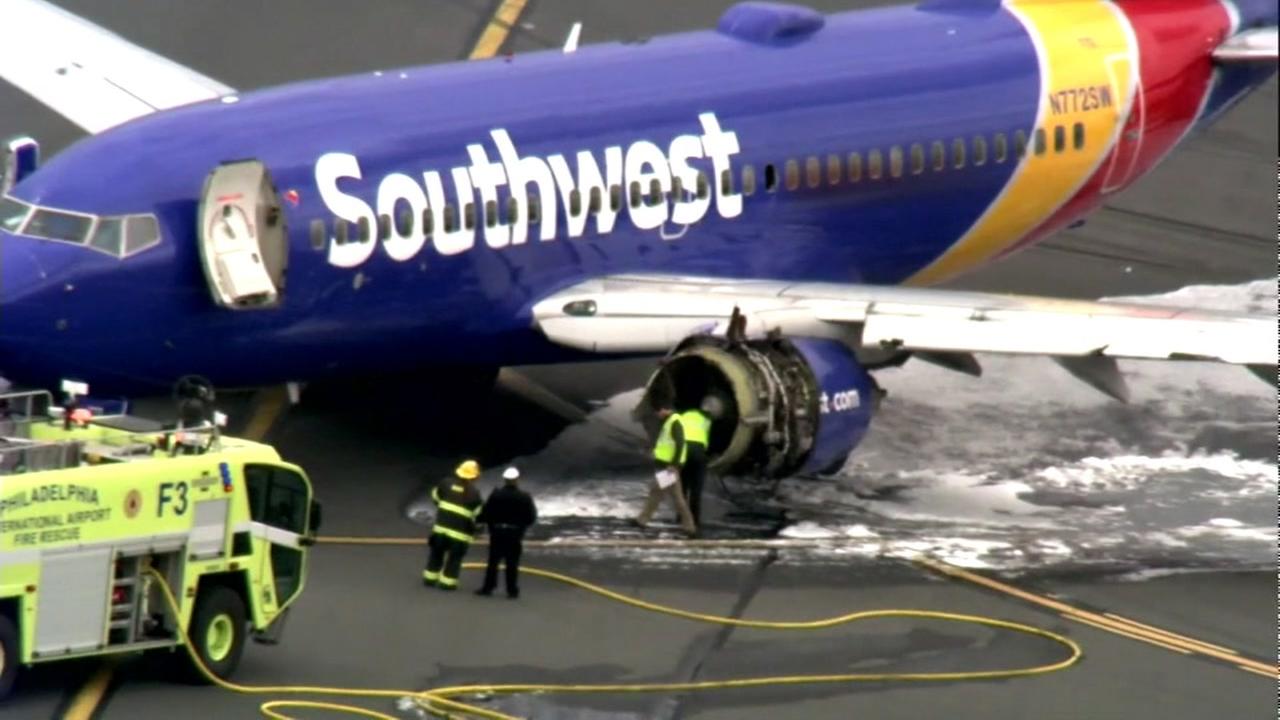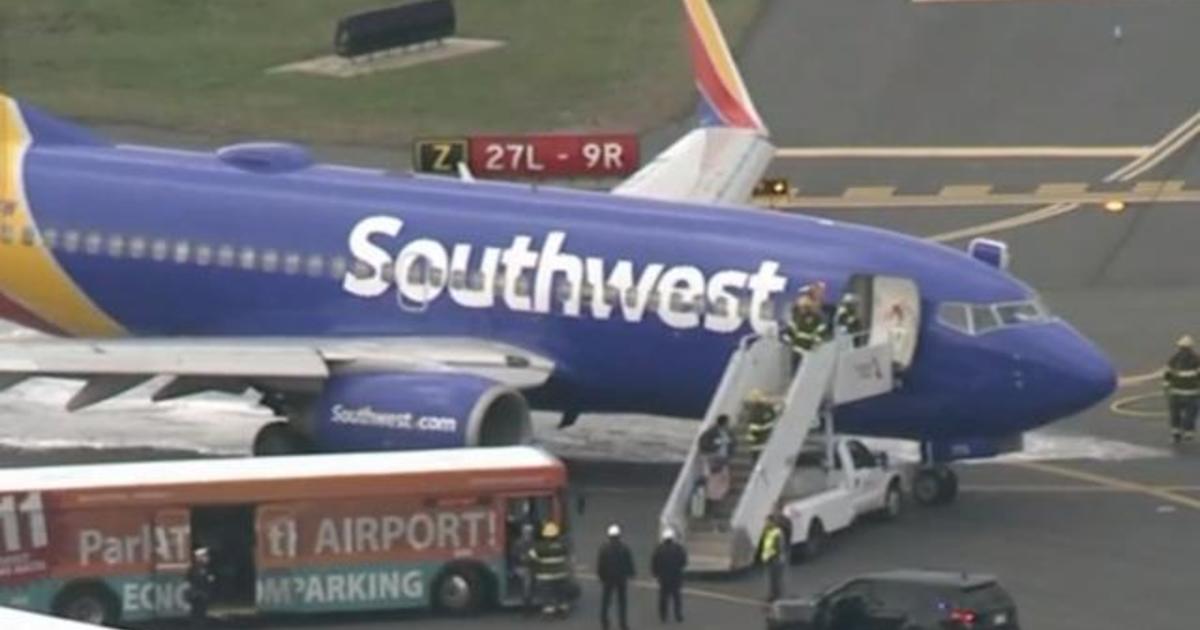Southwest Emergency Landings: What's Happening?
Is air travel becoming less safe, or are we simply more aware of the incidents that have always occurred? Recent events involving Southwest Airlines, particularly the numerous emergency landings, suggest that the airline is facing a period of heightened scrutiny and operational challenges. The frequency with which these events are occurring raises critical questions about the airline's maintenance protocols, pilot training, and overall safety culture.
The skies, once symbols of boundless freedom and reliable transport, are increasingly punctuated by reports of mechanical failures, engine troubles, and unexpected diversions. These aren't isolated incidents; they are part of a pattern that demands closer examination. From the smell of smoke in the cabin to engine fires and tire failures, Southwest Airlines has been grappling with a series of in-flight emergencies that are causing concern among passengers and aviation experts alike.
Here's a look at some of the incidents that have recently plagued Southwest Airlines:
| Date | Location | Flight Details | Incident | Outcome |
|---|---|---|---|---|
| Undisclosed | Colorado | Unknown | Flight attendants smelled smoke in the cabin. | Emergency landing in Colorado. |
| December 13, 2024 | Arlington, Virginia | N/A (Stock Photo) | N/A | Stock photo taken. |
| Monday (Undisclosed) | Denver to Phoenix | Flight 225 | Jet returned to Denver International Airport. | Emergency landing. |
| Undisclosed | Texas | En route to Cabo San Lucas, Mexico | Engine caught fire shortly after takeoff. | Emergency evacuation. |
| Undisclosed | Denver to Houston | Unknown | Engine cover detached during takeoff. | Emergency landing. |
| Undisclosed | Havana to Florida | Unknown | Hit birds and suffered engine trouble. | Emergency landing in Havana. |
| Undisclosed | New York City to Dallas | Flight 1380 | Emergency landing. | Emergency landing in Philadelphia. |
| Undisclosed | Unknown | Unknown | Tire failure. | Emergency landing. |
| Undisclosed | Unknown | Flight 3695 | Incident heard on air traffic control recordings. | Emergency declared. |
| Undisclosed | Houston to Cancun | Unknown | Passenger spotted an engine on fire. | Emergency landing. |
| Undisclosed | Unknown | Unknown | Flames seen shooting out of engine. | Emergency landing. |
| Undisclosed | Fresno Yosemite International Airport | Flight 3113 | Emergency landing. | Emergency landing. |
| Monday (Undisclosed) | Colorado Springs | Unknown | Crew smelled smoke in the cabin. | Emergency landing. |
| Monday (Undisclosed) | Denver to Phoenix | Flight 225 | Jet returned to Denver International Airport. | Emergency landing. |
| Undisclosed | Colorado | Unknown | Landing gear issue during takeoff. | Emergency landing. |
| Undisclosed | Sacramento International Airport | Unknown | Flap issue. | Emergency landing. |
| Wednesday (Undisclosed) | New Orleans to Orlando | Unknown | Encountered turbulence. | Emergency landing in Tampa, two injured. |
| Saturday (Undisclosed) | Houston to Columbus, Ohio | Unknown | Passenger disturbance. | Emergency landing in Little Rock, Arkansas. |
| Tuesday (Undisclosed) | San Jose to Burbank | Unknown | Engine trouble. | Emergency landing in San Jose. |
| Sunday (Undisclosed) | Denver to Tampa, Fla. | Unknown | Mechanical issue during takeoff. | Emergency landing in Colorado Springs. |
| Monday, May 27 (Undisclosed) | Las Vegas | Unknown | Captain incapacitated. | Emergency landing assisted by pilot from another airline. |
The incidents described paint a concerning picture. They range from engine malfunctions and tire failures to smoke in the cabin and passenger disturbances. Some flights were forced to return to their origin, while others diverted to different airports. The causes are varied, but the common thread is the potential risk to passengers and the need for swift, decisive action.
The Federal Aviation Administration (FAA) and the National Transportation Safety Board (NTSB) are undoubtedly investigating these incidents. Their findings will be crucial in determining the root causes of these events and implementing necessary safety improvements. The focus of these investigations will likely include: maintenance records, pilot training protocols, and the overall safety culture within Southwest Airlines. Passengers have the right to expect that airlines will prioritize their safety, and the investigation will provide answers, and hopefully, reassurance.
The frequency of emergency landings, particularly those related to mechanical failures, highlights the critical importance of robust maintenance programs. Regular inspections, preventative maintenance, and timely repairs are essential for ensuring the safety of aircraft. The FAA sets strict standards for aircraft maintenance, but airlines must go above and beyond these standards to ensure that their aircraft are in optimal condition. Proper maintenance not only prevents potential accidents but also contributes to the overall reliability of the fleet.
The role of pilot training cannot be overstated. Pilots need to be prepared to handle a wide range of in-flight emergencies, from engine failures to cabin fires. Comprehensive training programs, including simulator exercises and scenario-based training, are crucial for equipping pilots with the skills and knowledge they need to respond effectively in crisis situations. Furthermore, clear communication between pilots and air traffic control is paramount during emergencies. Accurate and timely information is essential for coordinating a safe landing and minimizing potential risks.
The incidents also bring into focus the importance of a strong safety culture within the airline. A positive safety culture is one in which employees at all levels feel empowered to report safety concerns without fear of retribution. It's a culture where safety is seen as a shared responsibility, and where continuous improvement is the norm. This includes reporting any issues with the aircraft to ensure passenger safety, as well as dealing with the safety issue as quickly as possible.
In several instances, the swift actions of the pilots and crew prevented more serious outcomes. In one case, a pilot from another airline helped to land a Southwest flight after the captain became incapacitated. This highlights the importance of collaboration and professionalism in the aviation industry. However, the fact that such incidents are occurring suggests a need for further review and improvement of safety protocols.
The recent events underscore the importance of transparency and communication. When incidents occur, it is crucial for airlines to provide timely and accurate information to the public. This includes details about the nature of the incident, the actions taken, and any steps being taken to prevent similar occurrences in the future. Open communication helps build trust with passengers and demonstrates the airline's commitment to safety.
For passengers, the experience of an emergency landing can be terrifying. The reports of passengers "crying and screaming" on one Southwest flight highlight the emotional impact of such events. Airlines have a responsibility to provide support and assistance to passengers who have experienced these traumatic situations. This includes offering counseling services, providing clear information, and ensuring that passengers are treated with respect and empathy.
The series of emergency landings involving Southwest Airlines is a stark reminder of the complexities and potential risks inherent in air travel. While flying remains statistically safe, the recent events should serve as a wake-up call for the airline and the industry as a whole. It is imperative that all stakeholders, from the airline to the regulatory agencies to the passengers, work together to ensure that the skies remain safe for all.


